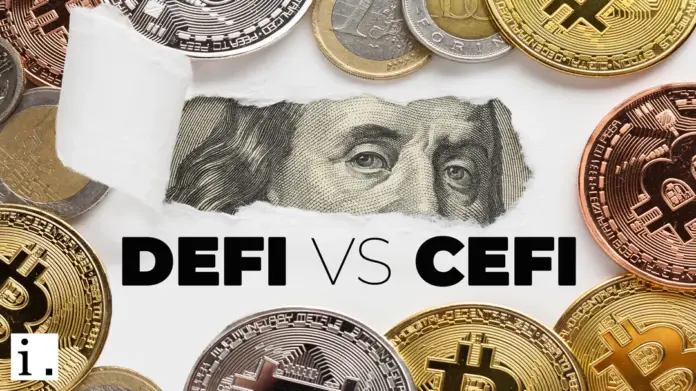
“
Technology and innovation are rapidly changing the global landscape, and the financial industry is one such example of radical innovation. The introduction of cryptocurrencies and blockchain technology has significantly altered the traditional financial system. Two alternatives have emerged out of the blockchain revolution: Decentralized Finance (DeFi) and Centralized Finance (CeFi).
In this article, you’ll learn about DeFi and CeFi, what makes them different, and how those differences affect consumers. If you care about finance and want to know where the industry is headed in 2024 and beyond, you’ll want to stick around.
What is DeFi?
Decentralized Finance (DeFi) Is a financial system rooted in the blockchain network, providing users with access to financial services. DeFi is an open and transparent financial system that operates on a peer-to-peer basis, allowing users to interact directly using smart contracts, a self-executing program that automates the process.
One of the key features of DeFi is its titular quality: decentralization. “Decentralized” means that it’s not controlled by any one entity, making it more resilient and secure against cyberattacks and bad actors. By using blockchain technology, DeFi ensures that transactions are immutable, transparent, and secure.
What is CeFi?
The counterpart to Decentralized Finance is Centralized Finance (or CeFi), a financial system that operates on a centralized network. Sound familiar? CeFi is the traditional financial system that most people are aware of—a system where banks and other financial institutions act as intermediaries in financial transactions.
CeFi gives users access to a range of financial services like loans, savings accounts, and trading, but these services come at a cost. In CeFi, users pay fees to banks and other financial institution, and the centrality of the network makes it an alluring target for cybercriminals.
“
Analysis – “This is a quick article that explains the concepts of Decentralized Finance and Centralized Finance.
Centralized Finance is what we are used to as it is the form that traditional banking has always been. The emergence and concept of DeFi has challenged the world’s current financial system by showing us that we are capable of operating at a more efficient level. We are though, stunted by shallow arguments that say it will not work at scale or that DeFi is vulnerable.
But wouldn’t any major change be susceptible to its vulnerabilities at first?
Our governments’ inability to see the goodness in a world that is decentralized along with the “emergence” of CeFi – which by no mistake is a bastardized representation of traditional banking – really does lead one to believe that the world is bureaucratically doomed by entities with too much money.
CBDC will be the death of crypto” – Easton Nguyen



